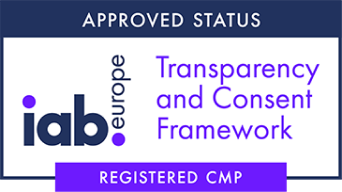Since the advent of digital marketing, brands have embraced paid media to increase sales and visibility. It’s only recently that influencer marketing has gained in importance in this competitive and constantly evolving market. Recent studies reveal that over 80% of merchants are now turning to affiliate marketing, including influencer marketing.
Does this new strategy really offer a better return on investment than paid media? What are the pros and cons of both approaches? That’s what we’ll examine here.
Are pay-TV media still as attractive as ever?
A brand using paid media needs to buy advertising space to increase its visibility. This may take the form of TV or radio spots, or dedicated space on websites. It can also appear in sponsored publications on social networks. A channel that, thanks to real-time optimization, enables you to achieve your objectives.
One of the main advantages of paid media is that brands have 100% control over their media presence. They can choose the images and messages they wish to broadcast.
This gives them great flexibility in how and where they wish to promote their services or products. It’s largely for this reason that brands prefer paid media.
The other side of the coin
But here’s the thing! Despite this total control, pay-per-click media have certain drawbacks, particularly when it comes to their effectiveness with target audiences. Indeed, consumer confidence in online paid media is gradually waning. Some are even irritated by advertising, which they often find intrusive and inappropriate. More and more Internet users are turning to ad blockers, posing a growing challenge for web marketers.
Influencer marketing breaks new ground
Faced with changing consumer habits, brands have had to rethink their strategies, notably by adopting influencer marketing. Influencer marketing, combined with affiliationis a powerful acquisition lever, for a number of reasons.
Influencer trust and credibility
Influencer marketing involves using influencers to increase visibility. This approach stems from the growing trend among consumers to give more credibility to peers than to traditional advertising.
Some consumers even boast of having bought products recommended by influencers. This testifies to the growing impact of influencers. The number of people who have bought an item after being influenced by an influencer continues to grow.
This underlines the importance placed on influencers with a strong presence on social networks and established credibility. Their authenticity and independence position them as benchmarks in their respective fields.
The added value of content
Over time, influencers have earned the trust of consumers, who now rely on their recommendations. This trust and credibility are the cornerstones of influencer marketing, which effectively meets consumer expectations.
The benefits of influencer marketing don’t stop there. Influencers are generally experts in creating and distributing quality content. This content is made available to brands. They can then reuse it across a range of marketing channels, including social networks, newsletters and even paid media.
Brands can therefore run more effective campaigns, offering measurable results at a lower cost than paid advertising.
The evolution of influencers
On the other hand, brands have access to an ever-growing panel of influencers, of which three types stand out: macro-influencers, micro-influencers and nano-influencers.
Admittedly, their distinction is based primarily on their respective audience size. However, each offers significant advantages in terms of interaction with their target audience and sales generation. Nevertheless, some are more advantageous than others.
Contrary to what you might think, it’s not necessarily the macro-influencers, with their large number of followers, who offer the most significant advantages.
In reality, micro-influencers and nano-influencers, because of their passion and authentic commitment, often prove more interesting to brands. Their higher engagement and conversion rates are the result of their real proximity to their audience. This makes their recommendations particularly influential.
Are there any risks involved in influencer marketing?
Influencer marketing is not without its risks. Unlike Paid Media, where content is controlled, the messages conveyed by influencers vary according to their personality and convictions. This can sometimes be at odds with brand values.
So it’s imperative to put in place appropriate tracking mechanisms. You can use social listening tools to monitor consumer conversations on social networks. You’ll be able to detect any changes in their perception of the brand. Surveys, polls and focus group analysis can also be used to gauge customer opinion and satisfaction.
By examining this data, you can assess the impact of influencer campaigns on consumer perception and loyalty. This will enable you to adjust your strategy accordingly.
Preventive strategies for effective collaboration
To anticipate and avoid unpleasant surprises, several strategies need to be put in place beforehand. This starts with the choice of influencers. Carry out in-depth research into aspects such as the content they produce, the demographics of their audience, their rate of engagement and their compatibility with your brand’s image.
Analyzing followers also helps ensure their relevance to your target market. Take a close look at influencers’ reputations and previous collaborations. This will ensure that your brand promotion is consistent and reliable.
Should we give up on Paid Media?
The results achieved by influencer marketing may tempt brands to forgo paid media. And yet, these two strategies can complement each other and deliver better results. By cultivating strong partnerships with influencers, brands can benefit from substantial organic visibility, which they can then build on with paid media.
The collaboration between a brand and an influencer can go beyond simple sponsored publications. Through paid media, brands can extend the reach of influencer content and reach a wider audience, while targeting qualified prospects. Influencer publications can be boosted on platforms like Facebook, maximizing their impact and visibility.
Content (videos or images) created by influencers, when promoted via paid media, acquires additional legitimacy. They reinforce their credibility as indisputable social proof.
Finally, rather than choosing between one or the other, the combination of influencer marketing and paid media offers a holistic and synergistic approach to increasing ROI.
As a trusted affiliate marketing platform, CASANEO is ready to help you navigate this complex world. Thanks to our expertise and our network of affiliates, we can offer you an in-depth, personalized analysis to determine the most effective strategy for your e-commerce business.







